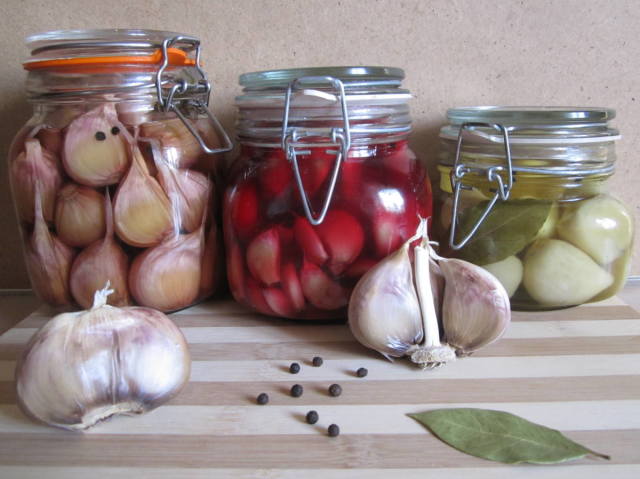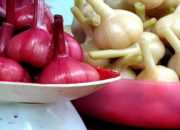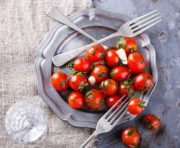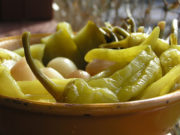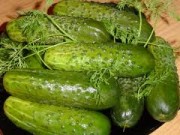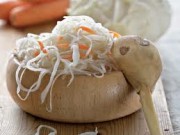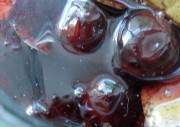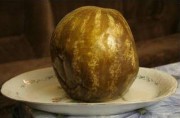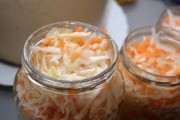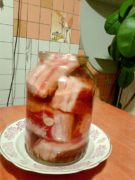Pickled garlic as on the market: simple methods of preparation - how to pickle garlic arrows for the winter, whole garlic heads and cloves
If you haven't tried pickled garlic, then you've missed out on a lot in life. This simple dish is so tasty and healthy that you simply must correct the mistake and, using the recipes in our article, try to pickle the aromatic spicy vegetable yourself.
Time to bookmark: Summer
Content
Selection and preparation of main ingredients
You can ferment not only whole heads of garlic, but also individual cloves, as well as green garlic shoots, which our gardeners get rid of by unknowingly disposing of them on compost heaps.
The green part of garlic (arrows) is usually cut out in late June early July. To use the arrows for culinary purposes, they are rinsed with water and then the deep green soft part is cut with kitchen scissors or a knife. It is better not to use the yellowed parts of the arrows, as they are quite hard.
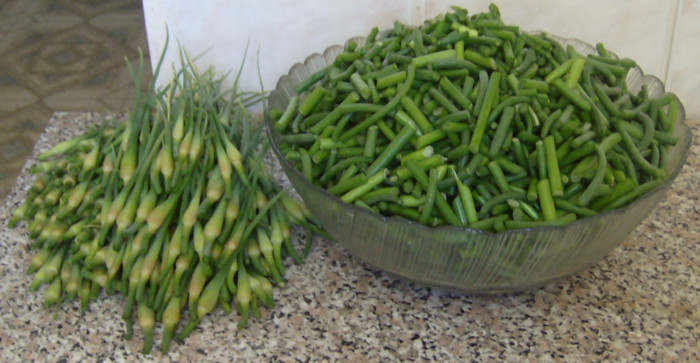
If you plan to salt whole heads of garlic, then you need to choose only fresh bulbs whose scales have not yet dried. The heads are freed from the root lobe and the flowering tube is cut so that the vegetable fits more compactly into the curing container. Before fermentation, the heads are soaked in cold water for an hour. This is done so that the outer skin can be easily removed. Only the top covering of the onion is removed, leaving the cloves “captured” by the thin skin.
If the garlic is not entirely fresh, then it is best to stop at fermenting individual cloves. The teeth are separated from the bottom and thoroughly cleaned. At the same time, they should be quite juicy.
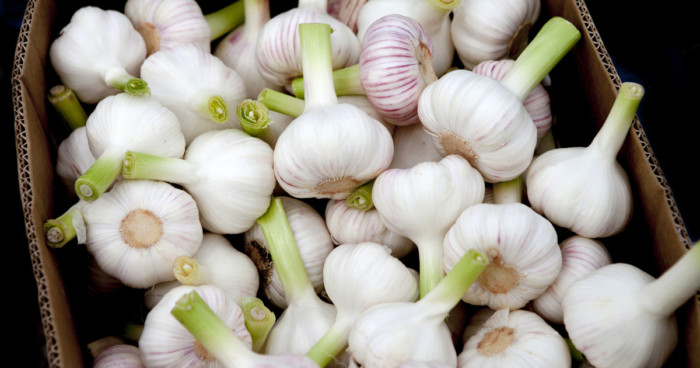
Recipes for pickling garlic
Delicious garlic arrows - winter preparation
For this recipe you will need garlic and dill umbrellas. The exact quantity is not regulated - how much there is. Place one dill umbrella and garlic arrows, cut to random lengths, into clean jars.
Next, cook the marinade. Thoroughly dissolve 100 grams of salt and sugar in 1.5 liters of water. After boiling for five minutes, the liquid is cooled and then the jars are poured into it so that the vegetable is completely immersed in the brine. The jars are covered with a lid, but not screwed on, and left on the table at room temperature for 5-8 days. It is advisable to place the containers in a basin or wide dish, since during fermentation some of the brine may run out. Why do you need a damp table? For the same reason, the marinade level is constantly monitored and, if necessary, either regular boiled water or the remains of the original prepared solution, which has been stored in the refrigerator all this time, is added.
After about a week, the brine from the jars is poured into a saucepan, brought to a boil and returned. Seal the preservation with sterile lids. Pickled garlic arrows do not require slow cooling under a blanket.
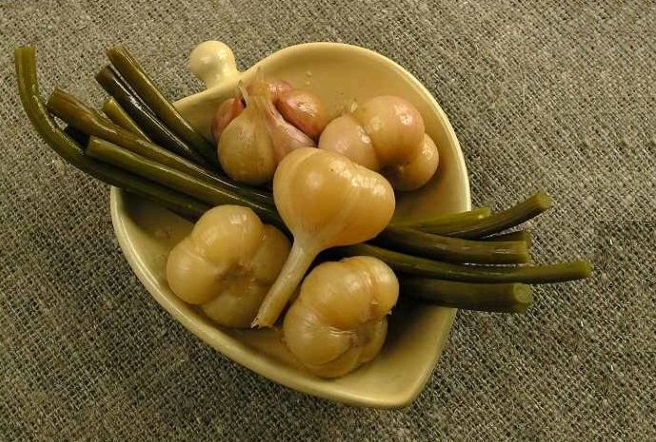
We invite you to take a look at the page with photo recipes pickling garlic arrows And pickling green garlic with seed arrows.
Whole heads
The marinade is prepared from 1 liter of water and 2 tablespoons of salt. After boiling, turn off the heating of the stove and allow the pouring to cool completely.
Place peppercorns (allspice is possible) - 6-8 peas, an umbrella of dill and 2 blackcurrant leaves into a clean jar. You can add cherry leaves, but this is optional.
Selected heads of garlic are placed in a dense layer in a jar, trying to allow as few voids as possible. The top of the pickle is covered with a thick layer of dill. Cover the container with a lid and leave to ferment in a warm place for 10 days. Add brine as needed. The best option is to top up with the same saline solution, and not just boiled water.
After the lactic acid bacteria have done their job, remove the resulting foam on the surface with a spoon. The jars are covered with plastic lids and stored in the refrigerator.
The author of the video from the Zinaida-Echo channel claims that his recipe for pickling whole garlic bulbs is the most correct
Pickling garlic cloves with vinegar
For the marinade, 45 grams of salt are dissolved in 900 milliliters of water. After the solution boils, add 45 milliliters of vinegar of 9% strength. Allow the brine to cool thoroughly before use.
Garlic cloves, freed from skins, are placed in a jar, to the bottom of which a horseradish leaf has been added.Place an umbrella of dill on the cloves and fill the contents of the jars with marinade.
The fermentation process should begin at room temperature. To do this, cover the jars with lids and leave them warm for 2 weeks. After this, the workpiece is tightly closed and put in the refrigerator. After another week, salted garlic can be served.
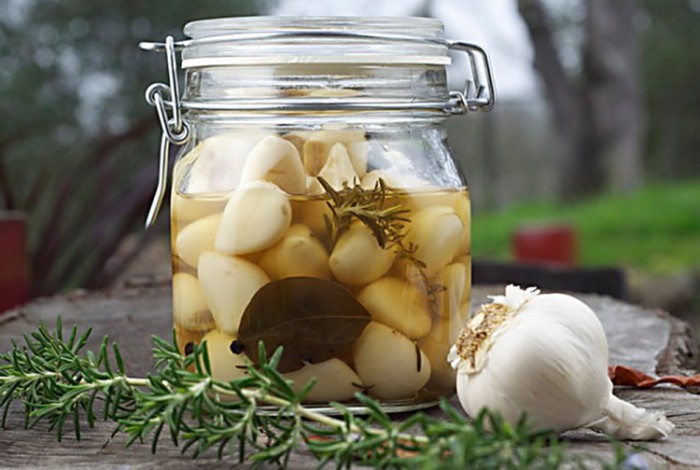
With beet juice
Garlic turns out very beautiful if it is fermented in beet juice. At the same time, the taste of the vegetable becomes softer and more refined.
So, for the marinade, take 1 kilogram of fresh juicy beets. Root vegetables are cleaned and passed through a meat grinder. Add 2 glasses of water to the vegetable puree, and then carefully filter the mass through cheesecloth. Beet pulp is later used to make soups.
The resulting juice is diluted with water so that the total volume of liquid is 1 liter. Next, add 70 grams of salt and 50 grams of granulated sugar and bring everything to a boil.
Only whole garlic bulbs are salted in this way. They are laid out in jars in a dense layer. If desired, add peppercorns (5-6 grains) and bay leaf. Pour the cooled marinade over the garlic. The fermentation process begins quite quickly and continues for 10-14 days. After this, the winter preparation is covered with lids and stored in a cool place.
We invite you to carefully study the video from the First Zagorodny channel about salting garlic cloves in beetroot sauce
With beet slices
To tint the brine with beets, you don’t have to bother with a meat grinder and gauze. You can use beets, cut into slices, for this. The main thing is that the root vegetable is fresh and juicy. Beet slices can be added to jars of garlic pickled according to any of the above recipes.Unless salted garlic arrows do not get the desired effect from adding beet cloves to the marinade.
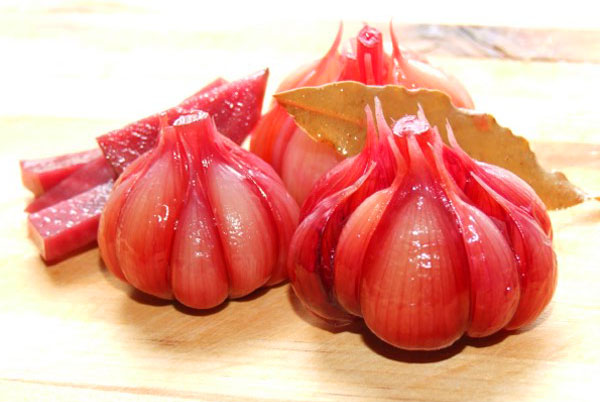
Spicy Ambassador
Adding herbs and spices is also of a purely personal nature. You can choose any composition of the brine and method of preparation.
Those who like it spicier add hot peppers, whole or in slices, to jars of garlic. Sprigs of basil, tarragon or rosemary add an interesting taste to the preparation. Cherry or bird cherry leaves help add piquant notes. The horseradish leaf adds crispness to the peeled slices and a subtle aroma. Also don't forget the parsley. It is added both in the form of greens and in the form of slices of aromatic roots.
By the way, on our website there are interesting recipes for pickling greens, for example, sorrel And dill.
Storage rules
Housewives usually don’t make very many of these preparations, so the point of preserving jars is lost. Pickled garlic, closed with ordinary nylon or screw lids, is perfectly stored in the refrigerator or cellar for 2 - 3 months. And if you periodically add a saline solution to the jar (20 grams of salt per 1 liter of liquid), then the shelf life of the product can be significantly increased.
